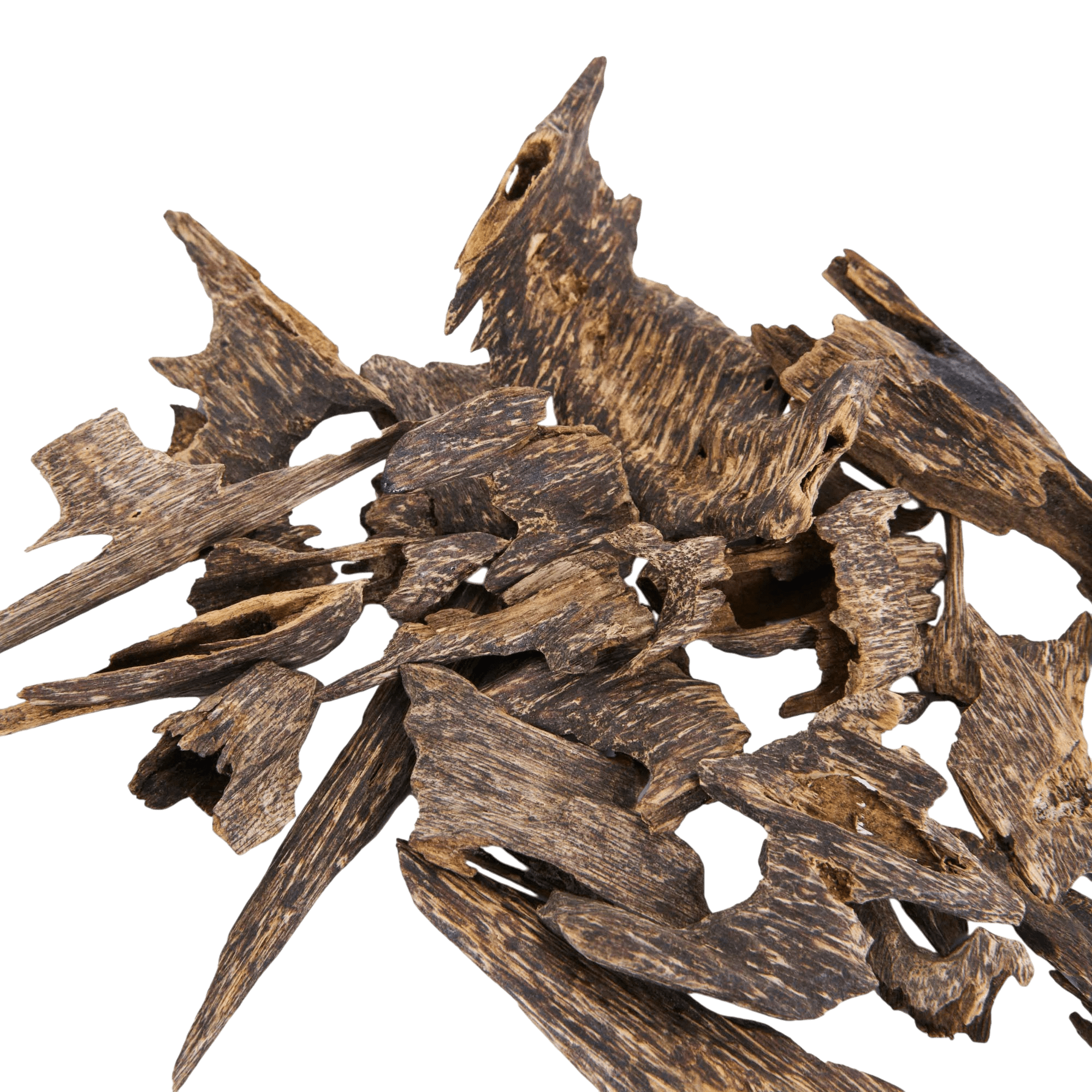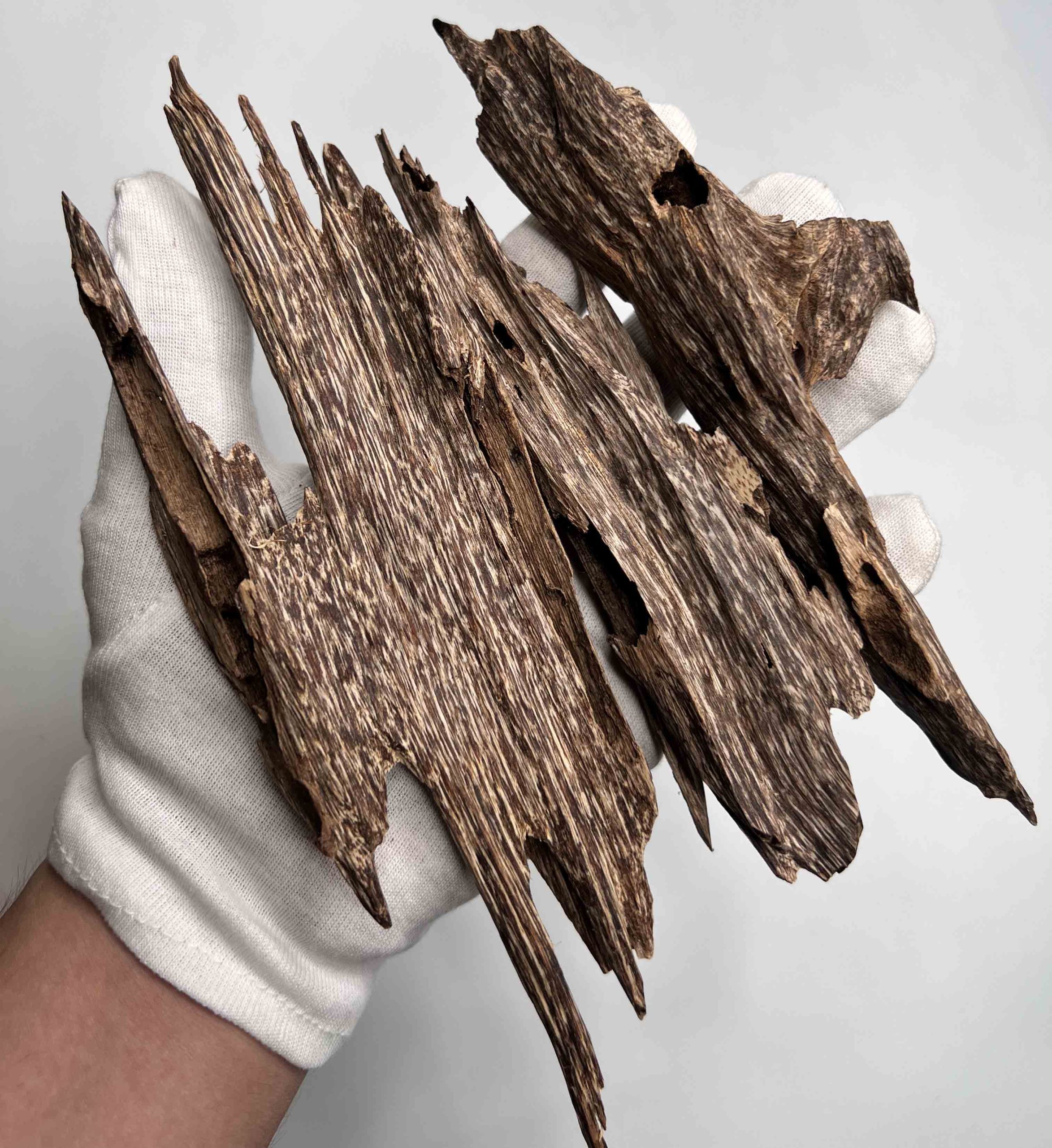Agarwood is renowned worldwide for its captivating fragrance, but among its many varieties, ant nest agarwood stands out as a rare and extraordinary treasure. Born from an unusual collaboration between trees and ants, this unique type of agarwood blends natural beauty with a rich, aromatic legacy. In this expanded blog post, we’ll dive deeper into what makes ant nest agarwood so special, exploring its origins, cultural significance, uses, and more. Whether you’re new to agarwood or a seasoned enthusiast, prepare to be enchanted by this hidden gem of nature.
Table of Contents
ToggleIntroduction: The Mystique of Ant Nest Agarwood
Picture a piece of wood that whispers tales of ancient forests and the tireless work of nature’s tiniest architects. That’s ant nest agarwood—a rarity formed over decades through a remarkable partnership between trees and ants. Prized for its intricate patterns and soul-soothing scent, it’s no wonder this variety is coveted by collectors, perfumers, and spiritual seekers alike. Join us as we uncover the secrets of ant nest agarwood, from its creation to its place in modern life, in a journey that’s as fascinating as the wood itself.

What Is Ant Nest Agarwood?
Ant nest agarwood originates from the Aquilaria tree, a species found primarily in Southeast Asia. Unlike typical wood, it’s the result of a natural defense mechanism triggered by stress—specifically, the activity of ants or other insects. As these tiny creatures burrow into the tree, creating a network of tunnels, the tree responds by secreting a dark, aromatic resin to protect itself. Over time, this resin saturates the wood, transforming it into ant nest agarwood.
What makes this variety unique is its striking appearance: the wood often displays delicate, irregular patterns resembling ant nests or honeycombs. These natural designs, combined with a deep, woody fragrance that carries hints of sweetness, elevate ant nest agarwood to a league of its own among agarwood types.

A Journey Through Time: The Cultural Significance of Agarwood
Agarwood has been cherished for millennia, its history steeped in the traditions of Asia, the Middle East, and beyond. Often called “oud” or “wood of the gods,” it has played a starring role in religious rituals, royal courts, and traditional healing practices. In Buddhist temples, its incense smoke is believed to carry prayers to the heavens, while in Islamic culture, it’s used to sanctify sacred spaces. Ancient Chinese texts praise agarwood as a remedy for everything from digestive issues to spiritual unrest.
Ant nest agarwood adds a unique chapter to this story. Its distinctive patterns and rarity make it a prized possession, often reserved for special artifacts or high-end crafts. For collectors, it’s not just the scent that matters—it’s the visual testament to nature’s patience and ingenuity, a piece of history you can hold in your hands.
How to Spot Authentic Ant Nest Agarwood
With its growing fame, fake ant nest agarwood has flooded the market. Here’s how to ensure you’re getting the genuine article:
- Look Closely: Authentic pieces are typically grayish-brown with organic, tunnel-like patterns. These should appear irregular, not machine-made.
- Test the Weight:Ant nest agarwood varies from light to heavy. Lighter pieces have less essential oil, while heavier ones, rich in oil from older trees, sink in water and are more valuable. If it floats, it’s simply low in oil—not necessarily fake.
- Test the Weight:
- Smell the Difference:The fragrance should be warm, woody, and subtly sweet, intensifying beautifully when gently heated in a specialized incense burner or electric censer.
- Smell the Difference:
- Feel It: Rubbing the surface may reveal a subtle oily texture from the resin—a hallmark of authenticity.

For peace of mind, purchase from trusted vendors who disclose the wood’s source and offer documentation. A little caution goes a long way in securing this natural treasure.

The Versatile Uses of Ant Nest Agarwood
Ant nest agarwood isn’t just a pretty piece of wood—it’s a multi-faceted marvel with applications across industries:
- Aromatherapy and Wellness: Its soothing aroma is a favorite in incense and essential oils, helping to ease stress and enhance meditation.
- Spiritual Connections: Burned during ceremonies or carved into prayer beads, ant nest agarwood is a staple in practices seeking peace and purity.
- Artistic Creations: Artisans craft it into jewelry, sculptures, or decorative items, blending functionality with natural elegance.
- Perfume Perfection: Luxury fragrances like Creed’s Royal Oud or Tom Ford’s Oud Wood often feature agarwood notes, with ant nest agarwood adding a rare twist to bespoke scents.
- A Smart Investment: Its scarcity drives its value sky-high—some pieces fetch thousands of dollars per kilogram, making it a collector’s dream.

From calming your mind to adorning your home, ant nest agarwood brings nature’s finest into everyday life.
Sustainability Matters: Preserving Ant Nest Agarwood
The allure of agarwood has a downside: overharvesting has endangered wild Aquilaria trees, pushing them toward extinction in some regions. Thankfully, conservation efforts are stepping up. Sustainable plantations now cultivate these trees, mimicking natural conditions to encourage resin production without depleting forests. The Convention on International Trade in Endangered Species (CITES) also monitors agarwood trade to curb illegal harvesting.
When buying ant nest agarwood, opt for ethically sourced options. Look for certifications or sellers who support eco-friendly practices—your choice can help safeguard this precious resource for years to come.
Conclusion: Embrace the Magic of Ant Nest Agarwood
Ant nest agarwood is a testament to nature’s ability to turn adversity into beauty. From its ant-carved origins to its starring role in perfumes and rituals, it’s a wonder that bridges the past and present. Whether you’re captivated by its scent, its story, or its sustainability, there’s something here for everyone. Ready to experience it? Seek out responsibly sourced ant nest agarwood and let this extraordinary creation inspire you—mind, body, and soul.
FAQ
1. What is ant nest agarwood?
Ant nest agarwood is a unique and rare form of agarwood created when ants or insects burrow into the Aquilaria tree. This activity triggers the tree to produce a protective resin, which over time infuses the wood, forming intricate tunnel-like patterns similar to an ant nest. It is highly valued for its distinct appearance and deep, aromatic scent.
2. How is ant nest agarwood different from other types of agarwood?
Unlike other agarwood varieties, ant nest agarwood is distinguished by its natural formation process involving insect activity. The resulting ant-tunnel patterns give it a one-of-a-kind aesthetic, while its fragrance tends to be richer and more layered, often featuring sweet, woody, and earthy undertones that set it apart from conventionally produced agarwood.
3. How can I tell if ant nest agarwood is authentic?
To verify the authenticity of ant nest agarwood, check for these signs:
- Visual Clues: Look for irregular, organic tunnel patterns or honeycomb-like structures.
- Density: High-quality pieces are heavy and typically sink in water due to their resin richness.
- Fragrance: It emits a subtle yet complex woody scent, which becomes more pronounced when heated.
- Touch: The surface may feel slightly oily from natural resin.
Buying from trusted vendors with clear sourcing information adds further confidence.
- Touch: The surface may feel slightly oily from natural resin.
4. What are the main uses of ant nest agarwood?
Ant nest agarwood serves multiple purposes, including:
- Incense and Aromatherapy: Its soothing aroma is used in incense sticks or oils for relaxation and mental clarity.
- Cultural and Religious Items: It’s crafted into beads or burned in ceremonies for spiritual benefits.
- Decorative Crafts: Artisans fashion it into jewelry or carvings, highlighting its natural patterns.
- Perfume Industry: Its unique scent enhances luxury fragrances.
- Collectible Value: Its rarity makes it a sought-after item for collectors and investors.
5. Is ant nest agarwood sustainably sourced?
Sustainability varies by source. Traditionally, agarwood harvesting risked depleting wild Aquilaria trees, but today, many suppliers grow these trees in controlled plantations. These farms replicate natural conditions to stimulate resin production ethically. To ensure sustainability, choose ant nest agarwood from vendors who provide transparency about their cultivation methods or certifications supporting eco-friendly practices.
Author
Le Minh Tuan is the Marketing Director of Oudgo, where he leads the development of marketing strategies, brand promotion, and the expansion of consumer markets. He holds a degree in Communications from the Foreign Trade University and boasts over ten years of experience in marketing and brand management, having worked with several international companies prior to joining Oudgo.Mr. Tuan has spearheaded creative marketing campaigns that seamlessly blend traditional and modern approaches, significantly enhancing Oudgo’s brand recognition and growing its customer base. His innovative efforts have been pivotal in Oudgo receiving numerous awards for brand excellence and product quality. See more
